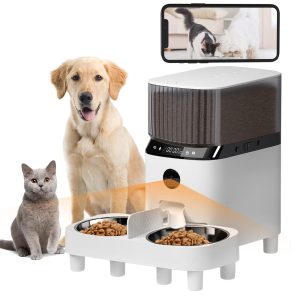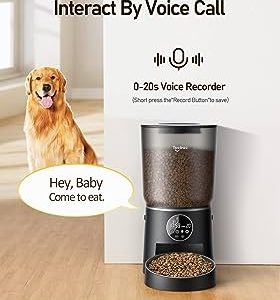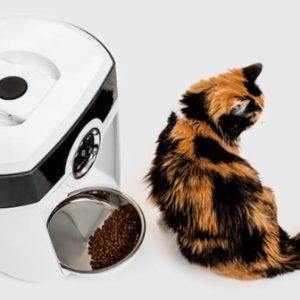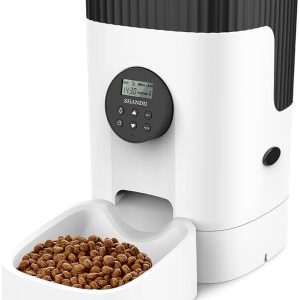Introduction
Pets are more than just animals; they are family members. As a pet owner, you always want to make sure your furry friend is well-fed, even when you’re not at home. That’s where an automatic pet feeder comes in handy. In this article, we’ll guide you through the process of building your own DIY automatic pet feeder.
Why Build an Automatic Pet Feeder?
An automatic pet feeder is a great way to ensure that your pet is fed on time, even when you’re not at home. It’s also a convenient way to control the amount of food your pet eats, which can be helpful if your pet is on a special diet or has weight issues. Building your own automatic pet feeder is a cost-effective option, and it allows you to customize it to meet your pet’s specific needs.
Things You Will Need
Before you start building your automatic pet feeder, there are a few things you will need. These include:
- Arduino board
- Servo motor
- Breadboard
- Jumper wires
- Power supply
- Food storage container
- Tubing or conveyor belt
Step-by-Step Instructions
Now that you have all the necessary materials, it’s time to start building your automatic pet feeder. Here’s a step-by-step guide on how to do it:
Step 1: Assemble the Circuit
The first step is to assemble the circuit. Connect the Arduino board to the breadboard, and then connect the servo motor to the board using jumper wires. Make sure to follow the wiring diagram to ensure that everything is connected correctly.
Step 2: Program the Arduino Board
Next, you need to program the Arduino board. You can use the Arduino software to write the code. The code should include instructions for the servo motor to rotate and dispense food at specific times.
Step 3: Attach the Food Storage Container
Attach the food storage container to the servo motor using tubing or a conveyor belt. Make sure that the food can flow freely from the container and into the feeding dish.
Step 4: Test the Feeder
Once everything is assembled, test the feeder to make sure that it’s working correctly. Set the feeding times and watch as the servo motor rotates and dispenses the food.
Tips for Building a Successful Automatic Pet Feeder
Building an automatic pet feeder can be a fun and rewarding project. Here are some tips to help ensure that your feeder is successful:
- Choose a sturdy food container that won’t tip over or break easily.
- Make sure the feeding dish is easily accessible for your pet.
- Test the feeder multiple times before leaving your pet alone with it.
- Use high-quality materials that will last a long time.
- Consider adding a backup power source in case of a power outage.
Conclusion
An automatic pet feeder is a great way to ensure that your pet is fed on time, even when you’re not at home. Building your own DIY automatic pet feeder can be a fun and rewarding project, and it allows you to customize the feeder to meet your pet’s specific needs. Follow these instructions, and you’ll have a functional automatic pet feeder in no time.





